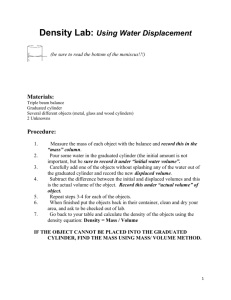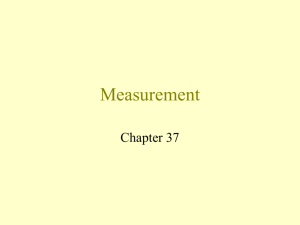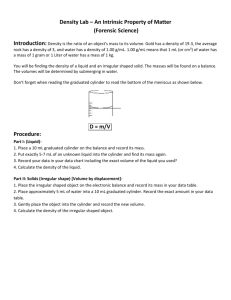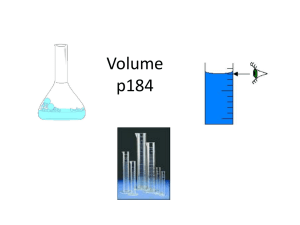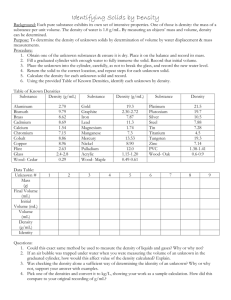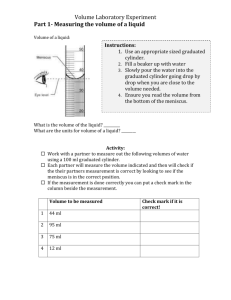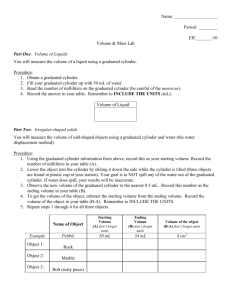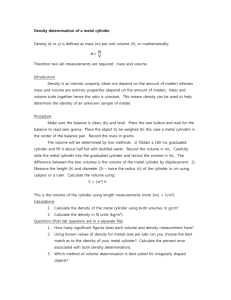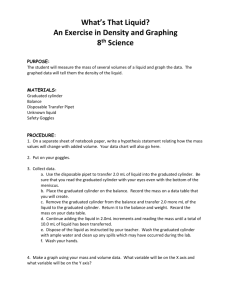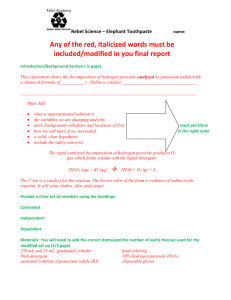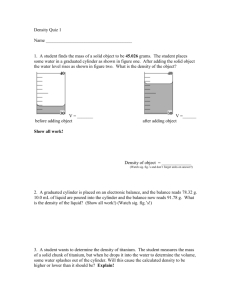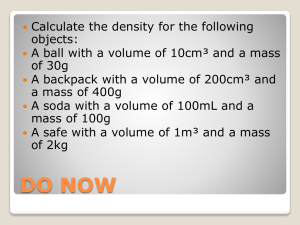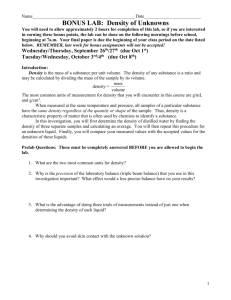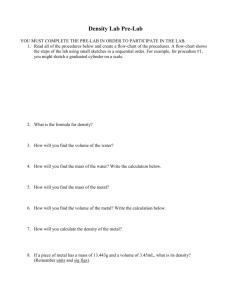PHYSICS 101 Laboratory Mass, Volume and Density
advertisement
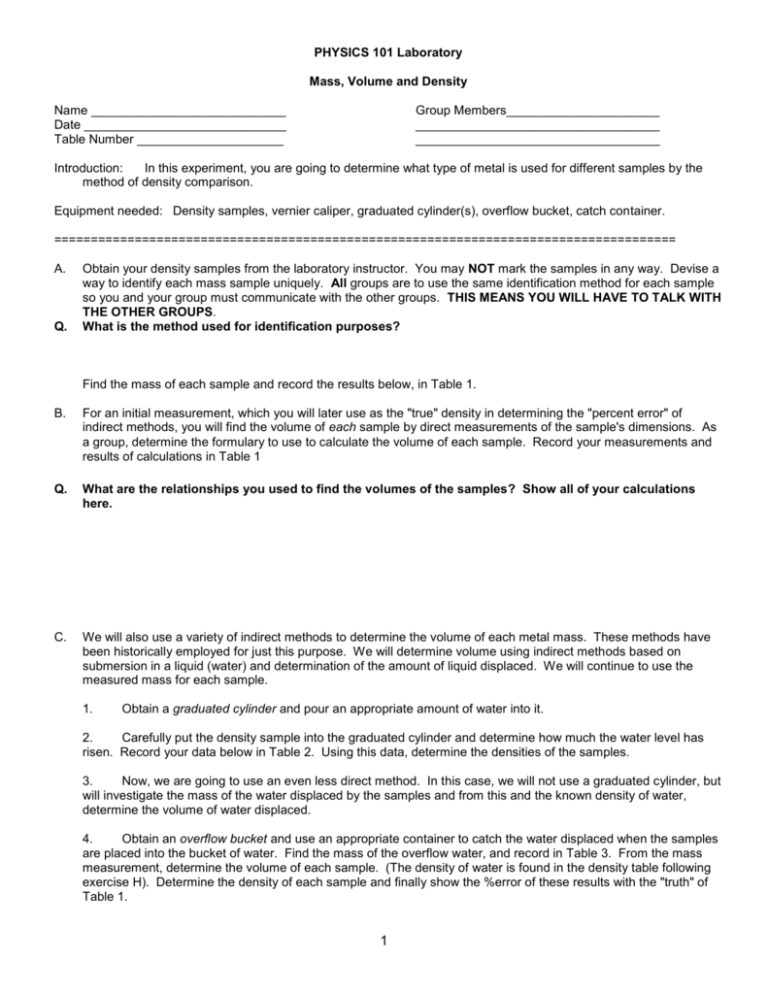
PHYSICS 101 Laboratory Mass, Volume and Density Name ____________________________ Date _____________________________ Table Number _____________________ Group Members______________________ ___________________________________ ___________________________________ Introduction: In this experiment, you are going to determine what type of metal is used for different samples by the method of density comparison. Equipment needed: Density samples, vernier caliper, graduated cylinder(s), overflow bucket, catch container. ===================================================================================== A. Q. Obtain your density samples from the laboratory instructor. You may NOT mark the samples in any way. Devise a way to identify each mass sample uniquely. All groups are to use the same identification method for each sample so you and your group must communicate with the other groups. THIS MEANS YOU WILL HAVE TO TALK WITH THE OTHER GROUPS. What is the method used for identification purposes? Find the mass of each sample and record the results below, in Table 1. B. For an initial measurement, which you will later use as the "true" density in determining the "percent error" of indirect methods, you will find the volume of each sample by direct measurements of the sample's dimensions. As a group, determine the formulary to use to calculate the volume of each sample. Record your measurements and results of calculations in Table 1 Q. What are the relationships you used to find the volumes of the samples? Show all of your calculations here. C. We will also use a variety of indirect methods to determine the volume of each metal mass. These methods have been historically employed for just this purpose. We will determine volume using indirect methods based on submersion in a liquid (water) and determination of the amount of liquid displaced. We will continue to use the measured mass for each sample. 1. Obtain a graduated cylinder and pour an appropriate amount of water into it. 2. Carefully put the density sample into the graduated cylinder and determine how much the water level has risen. Record your data below in Table 2. Using this data, determine the densities of the samples. 3. Now, we are going to use an even less direct method. In this case, we will not use a graduated cylinder, but will investigate the mass of the water displaced by the samples and from this and the known density of water, determine the volume of water displaced. 4. Obtain an overflow bucket and use an appropriate container to catch the water displaced when the samples are placed into the bucket of water. Find the mass of the overflow water, and record in Table 3. From the mass measurement, determine the volume of each sample. (The density of water is found in the density table following exercise H). Determine the density of each sample and finally show the %error of these results with the "truth" of Table 1. 1 PHYSICS 101 Laboratory Mass, Volume and Density Q. List and explain any expressions you use in the process of going from the mass of the overflow water to the volume of the cylinder. Show all of your calculations here. D. Now, time for "feed back." Comment on the methods used. Mention the difficulty of each, the perceived accuracy of each, the differences in "measured volume," the differences in "% error" etc., etc. Also mention the "utility" of each method with respect to finding the density of some arbitrary object. Finally, how about possible sources of experimental error with respect to each method? E. From the determined density, estimate what kind of metal each sample is by comparison with the Density Table following exercise H, and record your results. F. Now, we are going to use samples of "immediate origin." Find three different types of rock and repeat the above procedure for each. In selecting your rocks, avoid ones of obvious man made origin (e.g. concrete). Also avoid rocks with excessive soil content - no dirt clods! Record your data in Table 5. In this case, use whichever method of volume determination the group found to be the "best" in the previous exercise G. Calculate the average density for the earth. List the information you used to complete the calculation of earth's density. If no one in your group knows, ask your instructor for any expressions you need for this task and record them below. You will find the necessary facts about the earth in your text book. H. Compare this result with those of Table 5. Comment on (explain) any differences in the densities of Table 5 and the average density of earth. 2 PHYSICS 101 Laboratory Material Osmium Platinum Gold Uranium Lead Silver Copper Brass Iron Tin Aluminum Water (liquid) Ice Mass, Volume and Density Density - gms/cc 22.5 21.5 19.3 19.0 11.3 10.5 8.9 8.6 7.8 7.3 2.7 1.00 0.92 3
